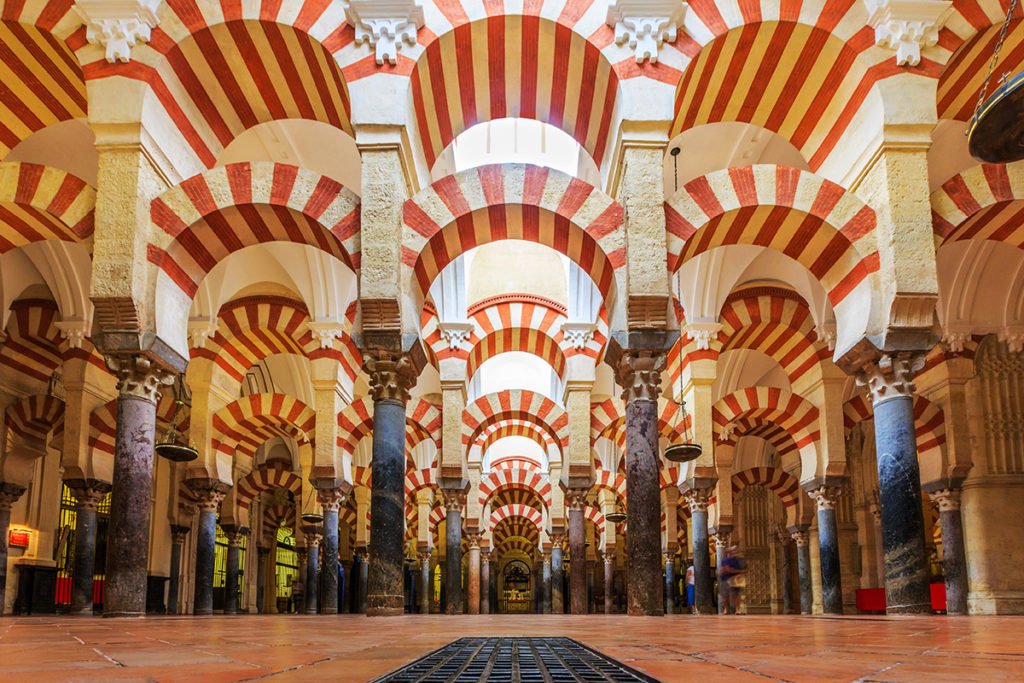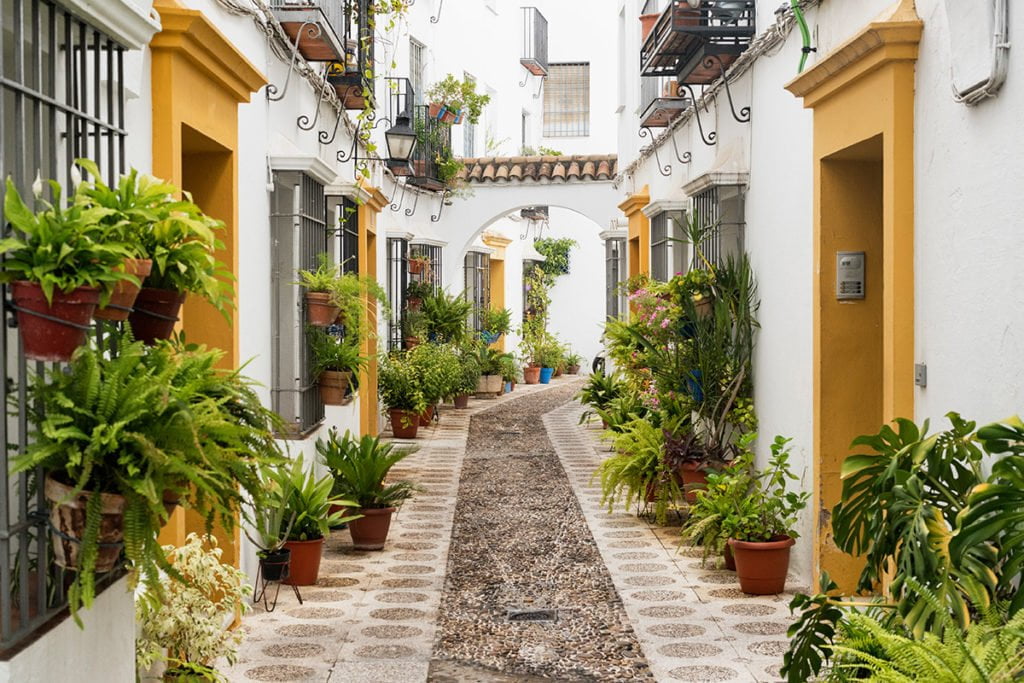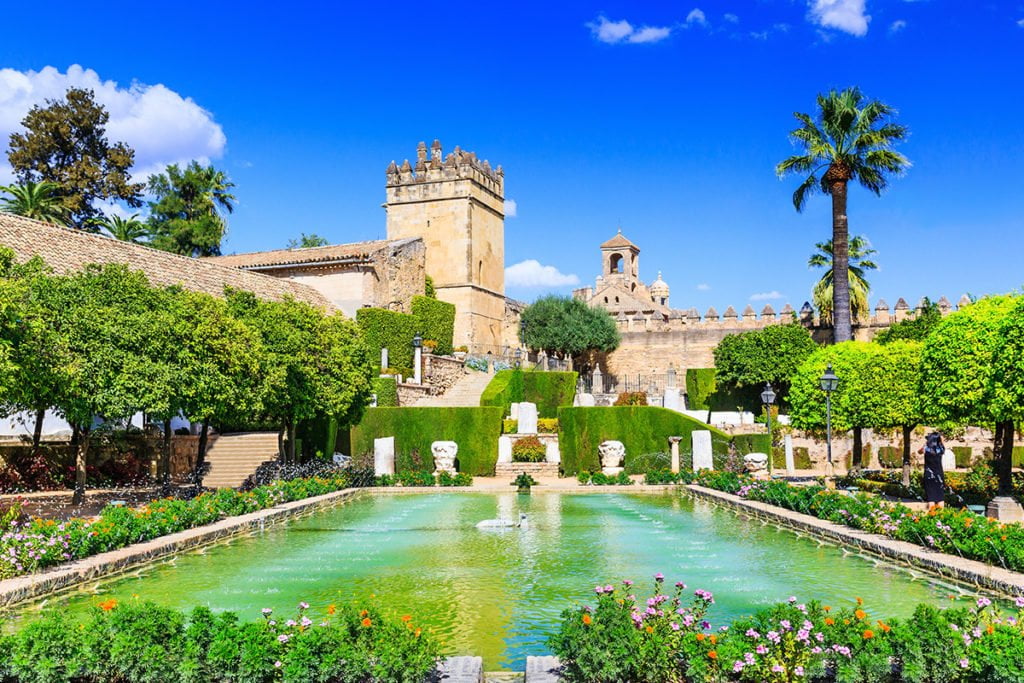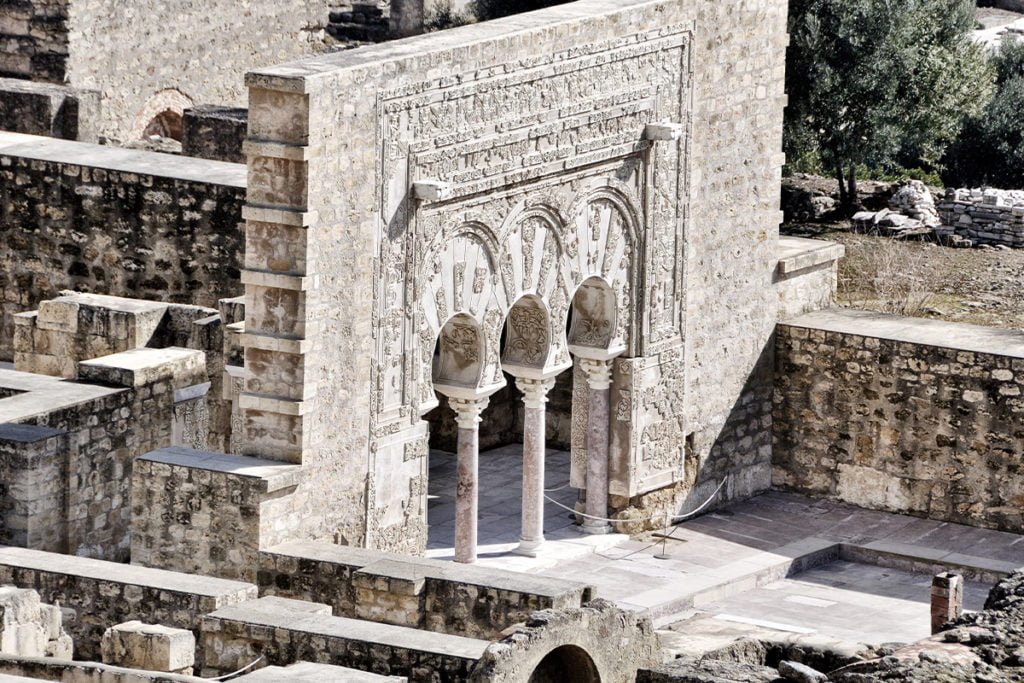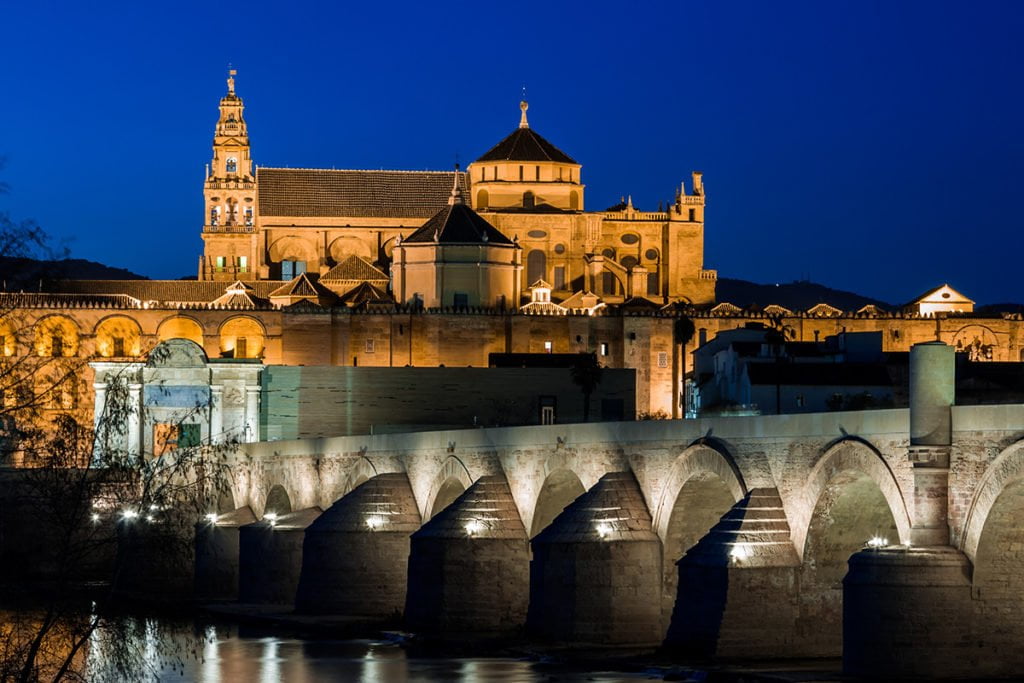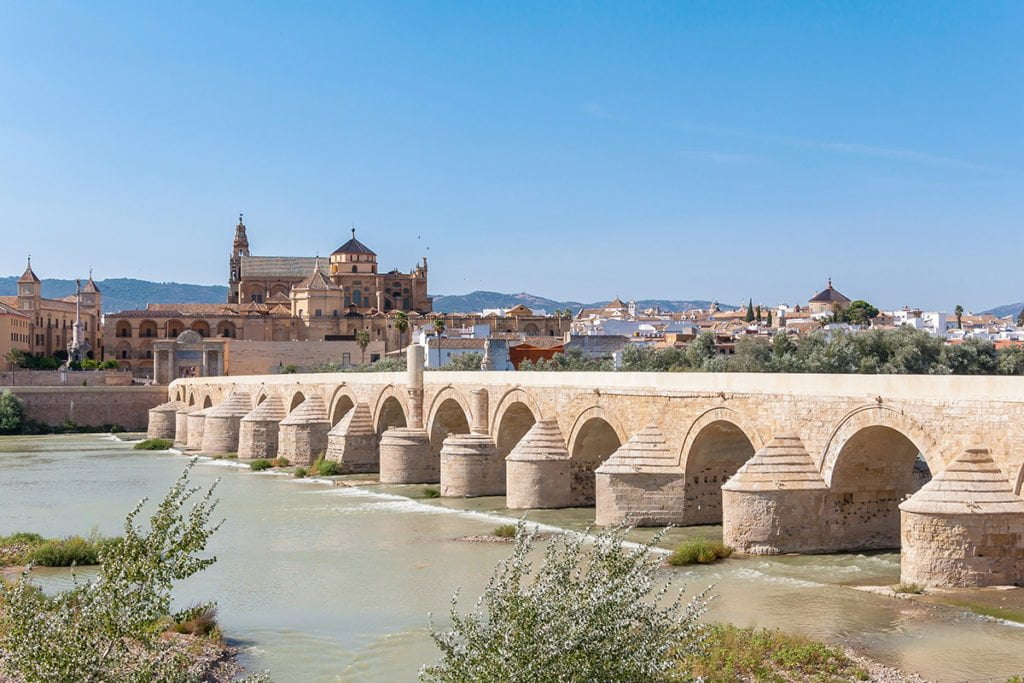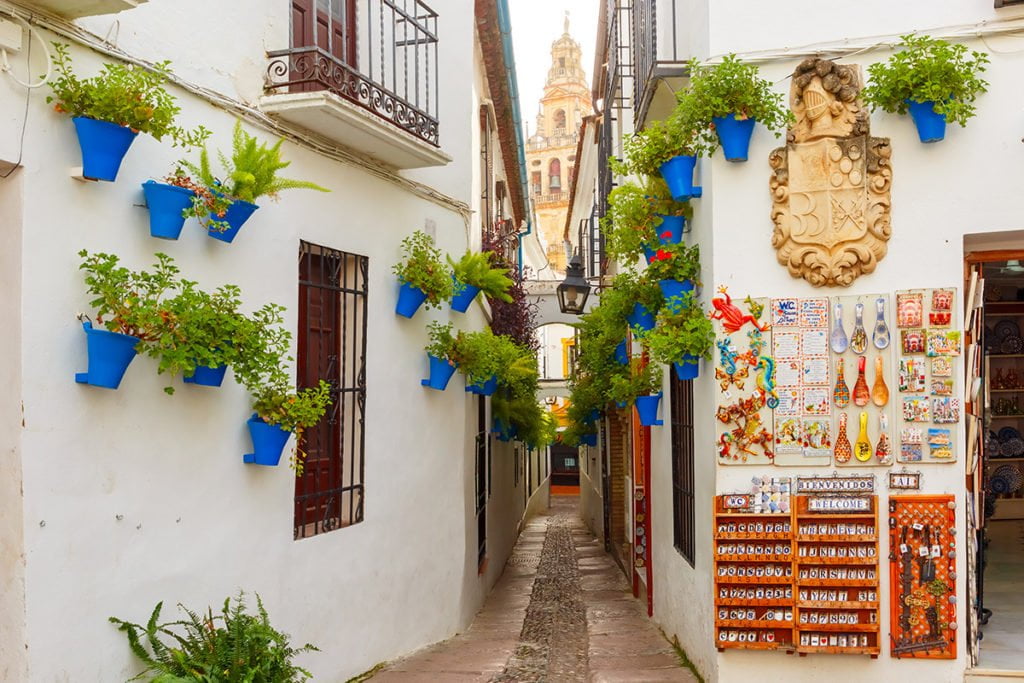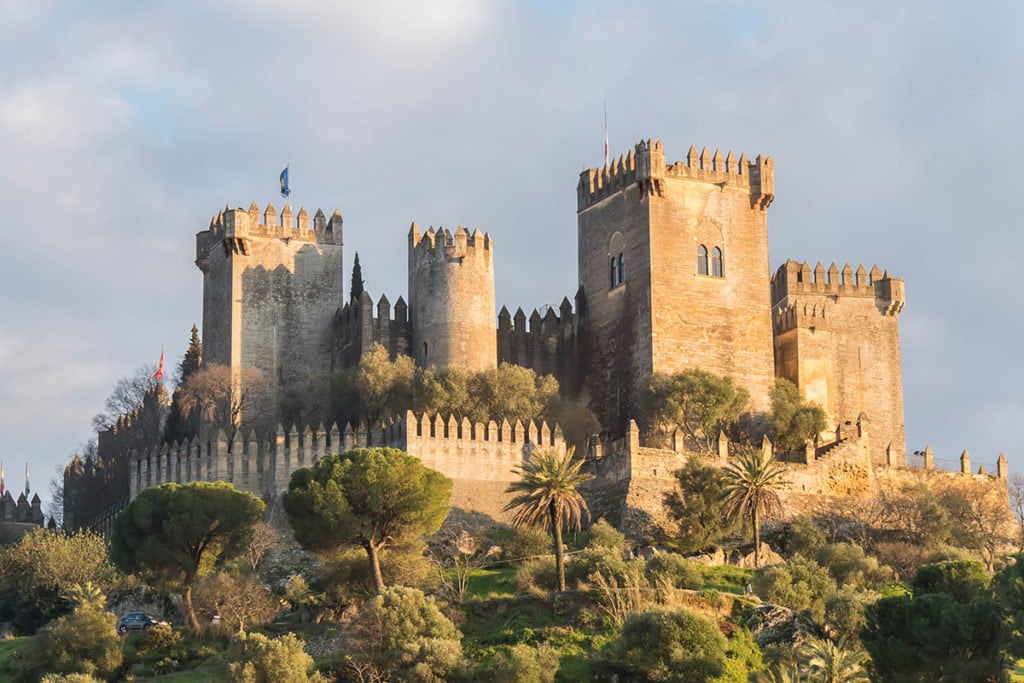Córdoba is the best city in all of Spain in terms of the number of Mudéjar-style monuments, and its old town (or historic center) has been entirely inscribed on the UNESCO World Heritage List.
Córdoba is located in southern Spain in the Andalusia region and is the capital of the province of the same name. It is only an hour away from the Mediterranean Sea, which makes this place an even more ideal holiday destination.
One day is not enough to visit Córdoba. It is definitely worth staying here a little longer to be able to delve into the beauty of this city without haste and appreciate the remnants of ancient cultures.
The Great Mosque
This is definitely the biggest attraction in Córdoba. The construction of La Mezquita (as its Spanish name is) began in 786, during the Caliphate of Córdoba. Subsequent Muslim rulers constantly expanded this temple, until it finally reached an area of 23,400 m2. This considerable number puts it among the largest mosques in Europe and the world.
After the Reconquista, this place was almost ruined and completely rebuilt into a Catholic church. Fortunately, thanks to the intervention of the King of Spain himself (Charles V), this was avoided. Thanks to this, today’s Great Mosque officially functions as a cathedral, but in terms of architecture it is a mixture of Arab and Christian art (Mudéjar style).
The Jewish Quarter of Judería de Córdoba
The former Jewish Quarter (Barrio de La Judería de Córdoba) functioned in Córdoba from the 10th to the 15th century. It is located in the old part of the city, northwest of the Great Mosque. It is made up of narrow streets: Calle Deanes, Calle Manríquez, Calle Tomás Conde, Calle Judíos, Calle Almanzor and Calle Romero. Due to its historical value and location near several other monuments (including the Synagogue and the Museo Taurino), this place is very popular with tourists. Walking through the Judería de Córdoba district, we can come across a bronze statue depicting Maimonides – a great philosopher and physician of Jewish origin.
Alcázar de los Reyes Cristianos
This is an object with a long history. It originally served as the residence of Roman governors. It was then taken over by the Muslims ruling the Iberian Peninsula. After the latter were driven out of Córdoba, the Catholic Monarchs – Ferdinand III of Castile and Isabella I of Castile – lived in the Alcázar de los Reyes Cristianos for over eight years (hence the current name of the castle).
Inside the fortified castle, we can admire, among other things: beautiful mosaics from Roman times, defensive towers (Torre del Homenaje, Torre de los Leones, Torre de la Inquisición and Torre de Paloma), selected rooms, patios and beautiful gardens of the Jardines del Alcázar. The enormous historical value of this place resulted in it being inscribed on the UNESCO World Heritage List in 1994 together with the Old Town. Is there a better recommendation to visit it?
Medina Azahara
If, going northwest from Córdoba, you come across the ruins of ancient Arab palaces, it is a sign that you are visiting the former Medina Azahara palace complex. Due to its considerable size, it is actually difficult to say whether we are talking only about a palace, or perhaps about a city. Regardless of which version we adopt, the fact is that this is a place that was once synonymous with wealth and luxury. And that was exactly the point. Medina Azahara, built by order of Abd ar-Rahman III, was intended to be one of the many symbols of the power and might of the Caliphate of Córdoba.
Old Town in Córdoba
The historical center of Córdoba, like every Old Town, attracts a lot of tourists. It is one of the largest old towns in Europe, which in 1994 was entirely inscribed on the UNESCO World Heritage List. Here you will find many monuments from various eras: Roman, Arab and Christian. The most important places worth seeing are: La Mezquita de Córdoba, the Jewish quarter of La Judería, Alcázar de los Reyes Cristianos, the Episcopal Palace, the Synagogue, the former St. Sebastian Hospital (Hospital de San Sebastián) and Puente Romano.
Roman Bridge (Puente Romano de Córdoba)
This bridge connects the opposite banks of the Guadalquivir River. Originally it had 17 arches – today there are 16. Puente Romano was built in the 1st century BC. It may be surprising that until the 20th century it was the only bridge in the city that allowed crossing the Guadalquivir River. It is worth coming here in the evening, when the atmospheric lighting adds even more charm to it.
In addition to the fact that the Roman Bridge is in itself an important historical monument, on its southern side we will find one more important place. We are talking about the Torre de la Calahorra, a 12th-century tower built by the Muslims to defend against the invasions of Christian armies. Today, its interiors house the Museo Vivo de Al-Andalus – an interactive museum showing what life was like in Córdoba as a city of three great cultures: Muslim, Christian and Jewish.
Viana Palace (Palacio de Viana de Córdoba)
This palace-museum can be found in the barrio de Santa Marina district. Inside, 14th-century exhibits await us – mainly furniture, carpets, carefully decorated ceramic tiles (azulejos), paintings, fireplaces and other interior design elements. The tour will be complemented by a visit to the charming patios and the magnificent garden full of lush vegetation.
Museum of Alchemy (El Museo de la Alquimia)
This is the first and so far the only Museum of Alchemy in Spain. Why was it created in Córdoba? Perhaps because it was in this city that the art of alchemy flourished the most during the Caliphate of Córdoba, encompassing knowledge from various fields of science.
El Museo de la Alquimia is a private initiative of Salma El Taji Al Farouki, who heads the Casa Andalusí (a museum dedicated to the former presence of Muslims in the Iberian Peninsula). Among the museum’s exhibits, we will find, among others, elixirs, medicines and alchemical stones. We will learn about the importance of alchemy in the past and how it is used in modern times. If you like such spiritual trips, you should like this place.
Museo de Julio Romero de Torres
This museum is dedicated to the famous Cordoban artist – Julio Romero de Torres. Inside, since 1931, an exhibition of paintings has been presented, which shows the artist’s strong attachment to his hometown. In the Museo de Julio Romero de Torres we have the opportunity to see also furniture, original palettes and brushes used by the painter, as well as his personal library.
Other sights and interesting places worth seeing
- Baños Árabes de Santa María – Arab baths from the times of the Caliphate of Córdoba.
- Capilla de San Bartolomé – A chapel of St. Bartholomew kept in the Mudéjar style.
- Casa de las Cabezas – A historic house shrouded in many legends.
- Calleja de las Flores – A charming street full of flowers, loved and willingly photographed by tourists.
- Plaza del Potro – A rectangular square with a Renaissance fountain from the 16th century. We can find a reference to this place in the novel “Don Quixote of La Mancha”.
- Plaza de Las Tendillas – Formerly a Roman forum, today one of the main squares in the city.
- Puerta del Puente – One of the three former city gates that have survived in Córdoba.
- Palacio de la Merced – A historic palace whose oldest elements date back to Roman times.
- Historic churches: Iglesia de San Lorenzo, Iglesia de San José y Espíritu Santo, Basílica de San Pedro, Iglesia de San Pablo, Basílica del Juramento de San Rafael
The City of Three Cultures
The history of Córdoba shows that the coexistence of different cultures in one area is not just a utopian dream of philosophers. It was Córdoba during the reign of the Muslims that, in addition to followers of Islam, was also inhabited by Christians and Jews. Each of these communities had its own system of values. Each believed in a different God. Each expressed it in a different way, characteristic of their religion. And all this took place in peace and tolerance for other communities.
Córdoba was an example for other European cities. In the 10th century it was the largest economic and cultural center in all of Europe. The idea of tolerance was reflected not only in the peaceful life of the inhabitants. It was thanks to it that culture and art developed so rapidly here. Córdoba was home to the largest university in the world, nearly 100 public libraries and over 300 bathhouses. Education of all social strata was taken care of (poorer families could send their children to several dozen schools that operated in the city), hygiene (most houses had a sewage system and had access to running water) and spiritual development (over 300 mosques functioned here).
All this created ideal conditions for the development and creation of unique monuments not only on a European but also on a global scale (one of them is La Mezquita). Visiting Córdoba today, we can admire the neighboring monuments of three great cultures. There are very few such places in the world.
What is worth seeing in the vicinity of Córdoba?
The convenient location of Córdoba makes it worth considering visiting several other places that may also interest you when deciding on a longer stay. Below you will find some of them.
Aguilar de la Frontera
This city is located 52 km from Córdoba. In Aguilar de la Frontera there are several interesting monuments, such as: the ruins of the 9th-century Castillo de Aguilar castle, the Baroque clock tower (Torre del Reloj) from the 18th century, the octagonal Plaza de San José square from the 19th century, several historic churches, the Hermitage of Ermita de la Vera Cruz, the 16th-century St. Bridget’s Hospital and the Las Descalzas convent from the 17th century.
Almodóvar del río Castle
When going from Córdoba to Seville, after about 25 km, a castle will appear before our eyes. Originally, a Roman fortress stood in this place. The Muslims rebuilt it in the 18th century, creating a castle with a very strategic location. During the Reconquista in the Iberian Peninsula, Almodóvar del río was one of the most frequently attacked structures by Christian troops.
Today, this place serves not only as a monument. It is a cult object for all fans of “Game of Thrones”. Some scenes for the series were filmed here, and all interested parties can take a special tour of the castle along the Game of Thrones trail.
Doñana National Park
This place will be loved by lovers of hiking, ornithologists and those who would finally like to make more use of their binoculars. Doñana National Park focuses on the protection of birds, including in particular those that are endangered. It is also home to numerous Iberian lynxes, deer, wild boars, hedgehogs and various amphibians and reptiles.

